[Big read] Double-edged sword of more new Chinese immigrants in Malaysia

(Photos: Seoow Juin Yee, unless otherwise stated.)
Huang Bin, a 42-year-old from Tianjin, came to Kuala Lumpur in 2002 to study international business at a private college. Back then, the Chinese did not have a deep understanding of Malaysia, but Huang took the risk and headed there, attracted by the affordable tuition fees and English-speaking environment.
He gradually grew to love Malaysia's local customs and pace of life, and decided to find a job in Kuala Lumpur after completing his studies. He settled down, started a family, and began exporting durians to China with a Malaysian business partner a few years ago.
Huang told Lianhe Zaobao that in the early 2000s, a large number of Chinese came to Malaysia to earn a living as labourers. Several black sheep among them abused their tourist visas or overstayed, which left a bad impression.
New wave of wealthier Chinese immigrants
"Many locals thought that the Chinese were con artists, and Chinese women were often seen as 'little dragon girls' who had illicit professions," he said.
Malaysia's private vocational schools at the time were also unregulated, and Chinese students studying there faced various problems; for example, the course might not match its curriculum description or the students might be cheated by their agents during the visa application process.
Huang then formed the China Students Association Malaysia with his friend to help fellow compatriots solve their problems. He also serves as secretary of the Malaysia China Welfare Advisory Society.
"The Chinese have truly become richer and more people are heading to Malaysia to study, invest and do business. The locals' perception of the Chinese has also changed." - Huang Bin, a Tianjin native who settled down in Malaysia
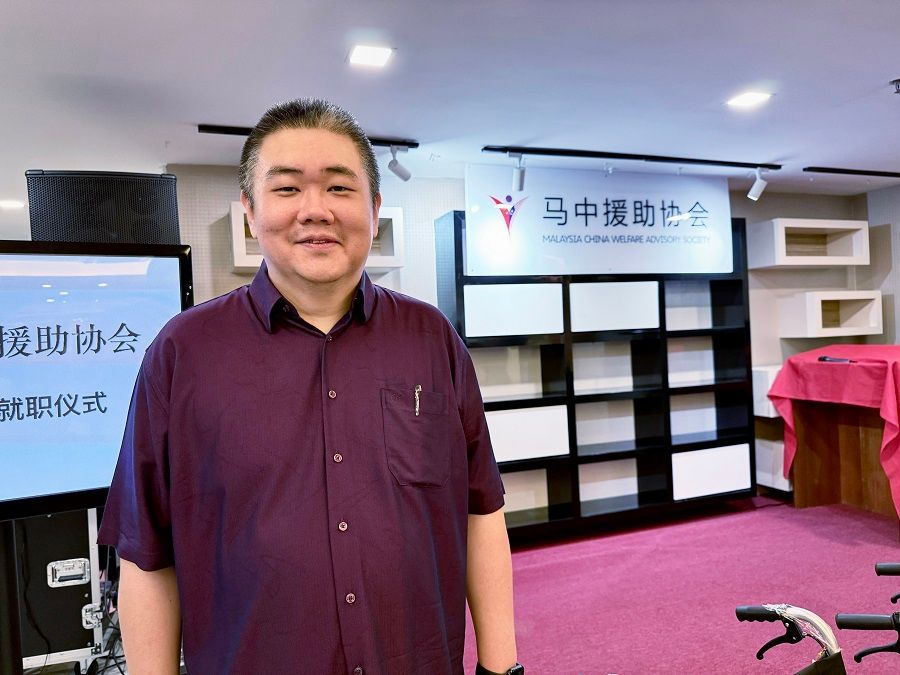
He said that Chinese Malaysian business people in Malaysia are often happy to lend a helping hand to the Chinese students there. "Perhaps they feel for their ancestors' struggle in Nanyang, and thus many of them are willing to do anything to help, be it money or energy," he shared.
After the 2008 Beijing Olympics, China's economy took off and its people's financial situation significantly improved. Huang thinks that the new immigration wave peaked between 2017 and 2019.
He said, "The Chinese have truly become richer and more people are heading to Malaysia to study, invest and do business. The locals' perception of the Chinese has also changed."
Now, Chinese people can be seen everywhere in Malaysia. For example, Chinese who want to do business or further their studies go to Klang Valley, while Chinese who want to slow down and semi-retire head to Penang. New Chinese immigrants have even settled down in Ipoh and Malacca, while many of them have married Malaysians in various regions. However, Malaysian officials have never released statistics on new immigrants, and there is limited academic research on them as well. Thus, the situation of new Chinese immigrants in Malaysia remains unclear.
Coupled with China's reopening after the Covid-19 pandemic, it is estimated that there are now over 100,000 Chinese nationals in Malaysia.

Ngeow Chow Bing, director of the Institute of China Studies at the University of Malaya (UM), said in an interview that Malaysia rarely grants foreigners citizenship or permanent residency, which means that people who have stayed in the country for a long time can all be categorised as new immigrants, including students, Malaysia My Second Home (MM2H) visa holders, labourers and overstayers.
In an article published in ISEAS Perspective in September 2022, Ngeow estimated that the number of new immigrants in Malaysia is at least 82,000, among which the biggest proportion are students (35%), followed by applicants of MM2H and their dependents (18%), and then expatriates or workers (12%).
Ngeow came up with this conservative estimation after compiling data from various departments, excluding MM2H visa holders in East Malaysia.
According to the latest statistics released by Malaysia's Ministry of Higher Education last July, Chinese students in Malaysia have grown from 29,000 in 2021 to 39,000 in 2022. Coupled with China's reopening after the Covid-19 pandemic, it is estimated that there are now over 100,000 Chinese nationals in Malaysia.
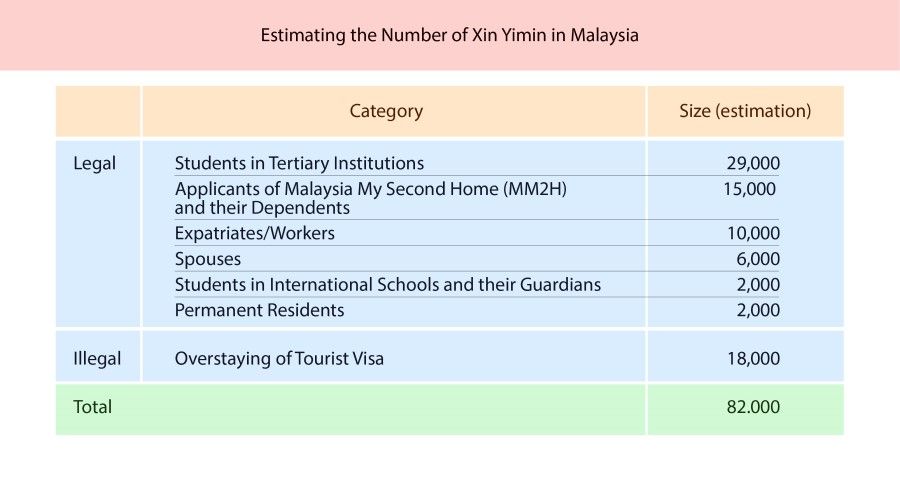
New Chinese immigrants have increased in recent years mainly because of their financial strength and the Chinese government's encouragement to expand abroad. China's poor relations with Western countries have also prompted more Chinese people to turn to Southeast Asian countries instead.
Among the Southeast Asian countries, Malaysia has an advantage in attracting new immigrants. The cost of living in Malaysia is lower compared with Singapore, while Malaysia has an unassimilated Chinese population and a relatively safer environment compared with Thailand.
Indeed, the massive number of Chinese migrating to Malaysia reminds people of the time when Chinese ancestors travelled to Nanyang over a century ago. However, times have changed and the new Chinese immigrants are migrating to Malaysia out of free will and because they have the ability to do so, not because they have to work as coolies.
Malaysia and other Southeast Asian countries very rarely issue citizenship to foreigners.
Difficulty integrating into mainstream society
Ngeow pointed out that this wave of immigrants have higher mobility - although they have stayed in Malaysia for a long time, few actually settle down "because they can decide if they want to stay or return to their country; they do not have to live in a fixed place".
Moreover, among the Southeast Asian countries, only Singapore's immigration policy is relatively open, allowing foreigners to have an avenue to become a citizen. Malaysia and other Southeast Asian countries very rarely issue citizenship to foreigners.
According to data from Malaysia's National Registration Department, in the past five years, only 45 Chinese immigrants received Malaysian citizenship.
Not unlike their "coolie" Chinese predecessors who came to Nanyang, new immigrants from China find it hard to communicate with non-Chinese ethnic groups and thus struggle to integrate into mainstream society. There could also be a lack of impetus to do so given the mindset that they would eventually leave.
Zhang Xianghua, a 29-year-old graduate student at UM, admitted that she and many Chinese occasionally run into communication problems living in Malaysia.
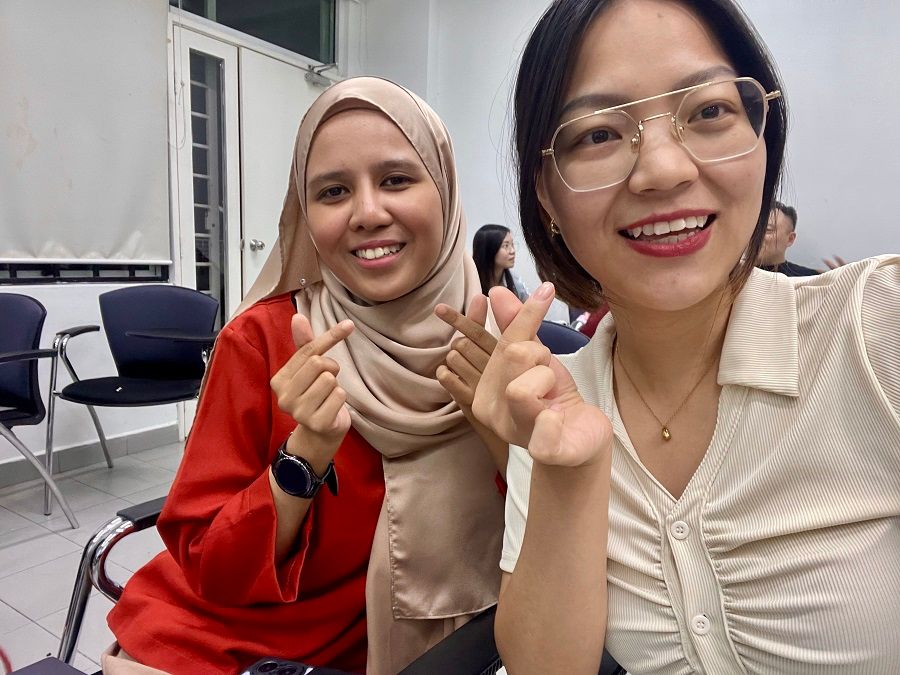
"The main language here is still Malay, and I sometimes cannot understand what the lecturer and my classmates are saying during classes. And due to their limited language ability, many Chinese are also afraid to interact with the Malays and Indians," she shared.
Zhang worked in Malaysia for eight months in 2018, and her fondness for the country led her to apply to come to Malaysia again two years later. She is currently a master's student at UM's Faculty of Business and Economics.
She said that in recent years there were increasingly more Chinese students studying abroad in Malaysia, because some Malaysian tertiary institutions have high international rankings, which would give them an advantage when they go back to China to look for work after graduating.
"But I plan to live in Malaysia for the long term; involution is too intense in China. I like the pace of life here and can feel how accepting Malaysian society is," Zhang added.
"The Chinese and the local Malaysian Chinese are different. The Chinese rarely interact with the locals and keep to their own circles, but they haven't caused any trouble to the locals so far." - Shen Honghua, an electronics store owner in Selangor
Shen Honghua, a 51-year-old who runs an electronics store in Sungai Buloh, Selangor, noticed that in the past few years there were increasingly more Chinese in the area, mainly white-collar workers and business people. He is not concerned that the Chinese would compete with the locals; instead he felt that the wealthy Chinese could spur economic growth by investing and spending in Malaysia.
However, he said, "The Chinese and the local Malaysian Chinese are different. The Chinese rarely interact with the locals and keep to their own circles, but they haven't caused any trouble to the locals so far."
UM's Ngeow believes that the social circle for new immigrants mainly consists of Chinese. They could also communicate with Malaysian Chinese, but it is rather difficult for them to integrate into mainstream society, and they do not interact much with the other races.
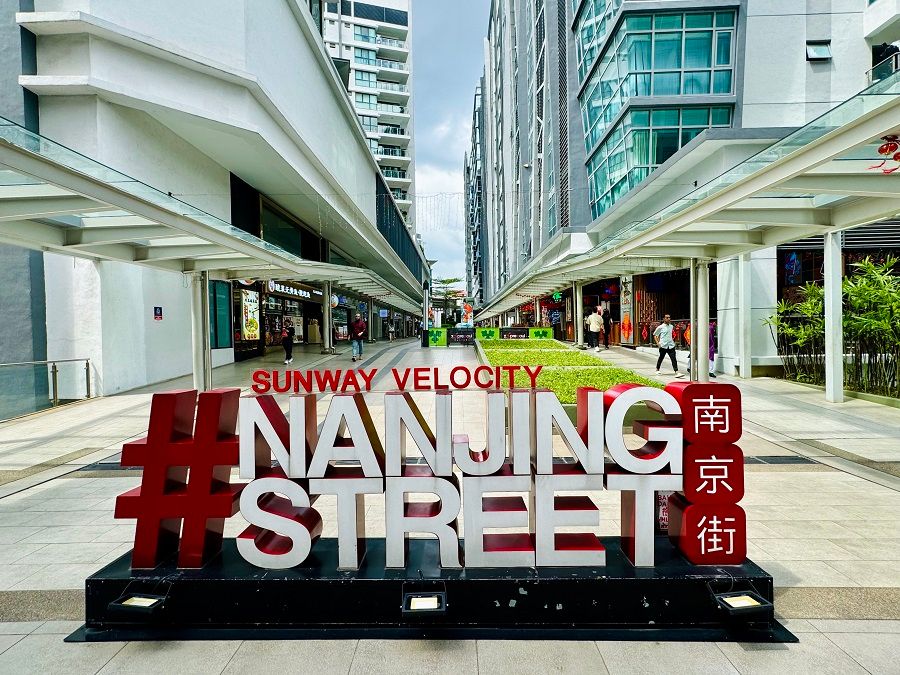
Some new immigrants had previously stirred controversy because they were unaware of Malaysian history and culture. In 2021, a Hunan restaurant in Penang put up a mural of Mao Zedong, not realising that communism is a taboo subject in Malaysia, and the restaurant's two Chinese chefs were detained by the police to assist in investigations.
Kuala Lumpur has its own 'Chinatown' and 'Nanjing Street'
As the number of Chinese immigrants increases, places deemed "little China" or "China town" such as Sunway Velocity Mall have popped up around Kuala Lumpur, and these areas differ from the traditional Petaling Street (known as Chinatown KL). Sunway Velocity Mall is an integrated development project with a shopping mall and residential apartments. Many of its residents are Chinese, and its "Nanjing Street" is filled with restaurants offering various Chinese cuisines.
Da Tang Wei Dao, a restaurant known for its Northeastern Chinese cuisine, opened at Sri Petaling in Kuala Lumpur eight years ago, and last year it set up a branch at Sunway Velocity Mall. Owner Li Jianpeng, 45, moved to Kuala Lumpur last year from Jilin province in China to look after the business.
Li stated when interviewed that he decided to set up his business in Malaysia because he saw that the post-pandemic recovery was better in Malaysia compared with China. "China is developing too fast, and the competition across all industries is tough, and there is a need to wait for the dust to settle. For the food and beverage industry, there is still much room for growth in Malaysia's market," he said.
Li's customers are mainly international Chinese students, as well as Chinese in Kuala Lumpur who are working for Malaysia-based Chinese companies. He said, "These past few years, Malaysian Chinese are also increasingly receptive to cuisines from China. Roughly 40% of our customers are local Malaysian Chinese."
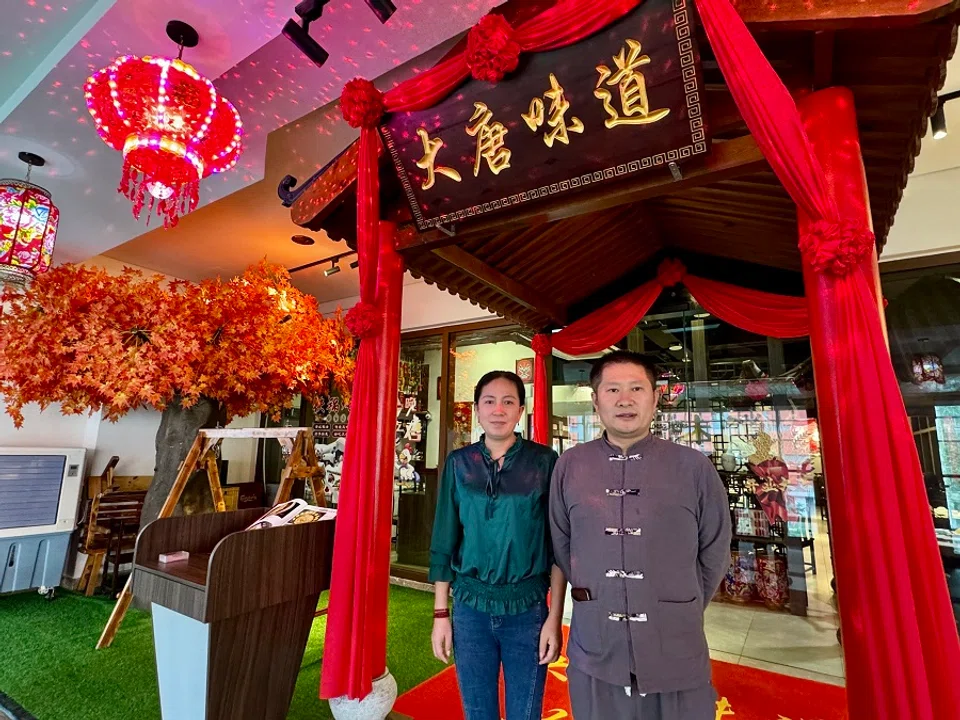
With increasingly more Chinese coming to Malaysia to invest and do business, in recent years communities and business associations for overseas Chinese set up by new immigrants have mushroomed, such as the Shandong Overseas Business Association, the Zhejiang Business Association and the Hebei Business Association. Besides offering assistance and sharing resources, these organisations also help in spurring collaboration between Malaysia and China.
... opposition parties criticised the relaxed MM2H programme for mainly attracting Chinese nationals, claiming that Chinese nationals can qualify for permanent residency in Malaysia once they obtain the MM2H visa...
Chinese immigrants issue used to stir racial sentiment
Racial and religious issues have frequently been made the battlegrounds for Malaysia's political parties over the past year, and the case of Chinese immigrants in Malaysia has also been used as a lightning rod to stir unrest among the Malays.
The Malaysian Ministry of Tourism, Arts and Culture drew criticism when it launched a revised version of the MM2H programme at the end of last year, lowering the age and financial requirements for applicants.
Programme applicants will be categorised into Platinum, Gold and Silver groups. The minimum stay requirement for applicants in the lowest Silver tier has been reduced from 90 days to 60 days per year, and the required fixed deposit has been decreased from 1 million ringgit (about US$208,680) to 500,000 ringgit. The minimum age for all groups has also been lowered from 35 to 30 years old.
After the authorities announced the relaxation of application conditions, there was a warm response, with many visa agents receiving inquiries from clients. As a result of the more relaxed application conditions, the enhanced MM2H programme is expected to attract a more diverse range of foreign applicants.
However, opposition parties criticised the relaxed MM2H programme for mainly attracting Chinese nationals, claiming that Chinese nationals can qualify for permanent residency in Malaysia once they obtain the MM2H visa, and describing this as the latest "red flag" for Malaysia.
This issue has garnered attention on social media. Opposition supporters criticised the government for allowing Chinese nationals to become permanent residents, accusing them of compromising national interests; some Malay citizens are also concerned about this programme.
Bank officer Norashidah, 35, a resident of Terengganu, told Lianhe Zaobao that a large influx of wealthy Chinese nationals to Malaysia would drive up property prices and living costs. She also worries that these Chinese immigrants "won't speak Malay and will only be able to communicate with other Chinese and local Chinese, making it difficult for them to integrate into Malaysian society".
... some Malay nationalists often hype up issues related to Chinese nationals, inciting racial sentiments. "If this is not controlled, it could exacerbate the anxieties of the Malays, and even raise suspicions." - Ngeow Chow Bing, Director, Institute of China Studies, UM
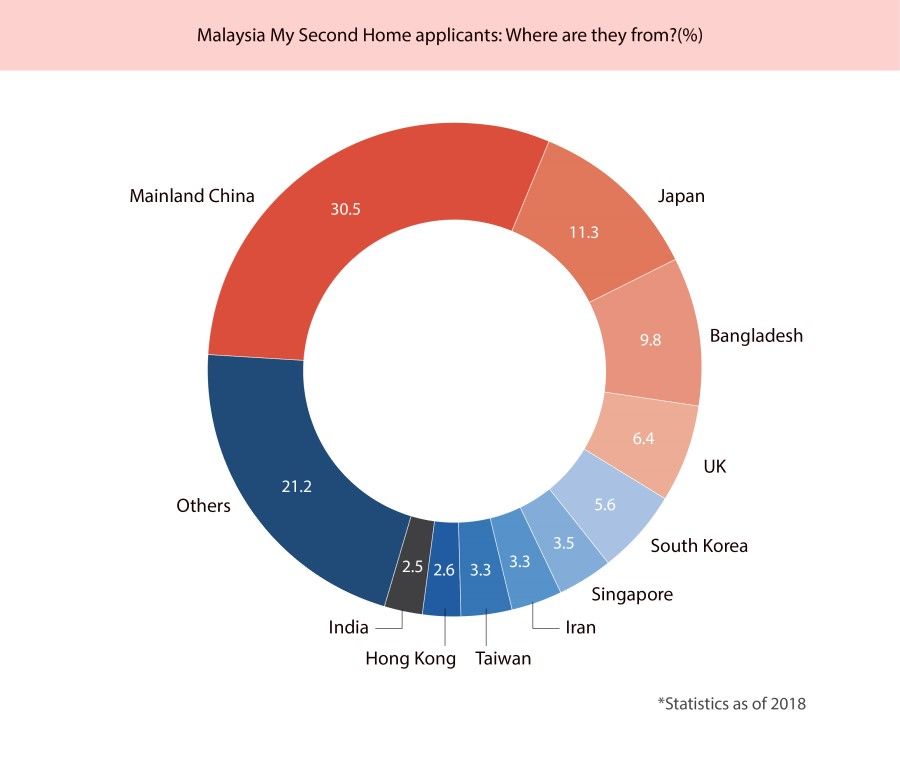
Official data as of 2018 show that the majority of applicants for the MM2H programme are from mainland China, at 30.5%, followed by Japanese and Bangladeshi nationals at 11.3% and 9.8% respectively. Singaporean applicants make up 3.5%.
Malaysia's Tourism, Arts and Culture Minister Tiong King Sing had clarified earlier that MM2H treats all eligible applicants equally, and only applicants in the Platinum group are eligible to apply for permanent residency, according to immigration regulations.
UM's Ngeow believes that the Malay community in general do not hold much animosity towards Chinese nationals, but some Malay nationalists often hype up issues related to Chinese nationals, inciting racial sentiments. "If this is not controlled, it could exacerbate the anxieties of the Malays, and even raise suspicions," he said.
... most Chinese nationals are economic immigrants and are not interested in Malaysian politics. As it is difficult for them to become citizens, they are not a political force.
New immigrants not in intense competition with locals
Malaysia's successive administrations have maintained a friendly policy towards China, with Prime Minister Anwar Ibrahim actively seeking investments from China and inviting Tsinghua University to establish a branch campus. Since 1 December last year, Malaysia and China implemented mutual visa exemption measures, and the Malaysian government accordingly lowered the thresholds for various visas.
Ngeow believes that with the strengthening of cooperation between Malaysia and China in education and the economy, the number of new immigrants will increase significantly in the coming years. However, as long as new immigrants do not affect the distribution of economic benefits or deprive Malaysians of opportunities, conflicts with locals can be avoided.
"At present, Chinese nationals in Malaysia are creating more opportunities than they are depriving the locals of opportunities. Whether they come to study, invest or travel, they can drive consumption in Malaysia. Most local Chinese also see the trend of Chinese immigration as an opportunity, and many of them have become business partners with Chinese," Ngeow said.

Furthermore, most Chinese nationals are economic immigrants and are not interested in Malaysian politics. As it is difficult for them to become citizens, they are not a political force.
However, as the number of new immigrants from China continues to increase, the various sectors in Malaysia must be prepared to ensure adequate resources.
Citing the education sector as an example, Ngeow said that the number of Chinese students studying in Malaysia has skyrocketed in the past five years, but many universities are not adequately prepared, leading to a shortage of resources such as teaching staff. "Previously, a university may have assigned five teachers to guide five students, but now it is five teachers guiding 50 students, which will affect the quality of teaching," he added.
He believes that while Anwar's development of Malaysia-China relations can bring opportunities, the government needs to study the potential problems that may arise from closer exchanges. He said, "These issues are not ideological or political; they are tangible and real. Are we able to accommodate an influx of new immigrants?"
This article was first published in Lianhe Zaobao as "中国人涌入谋发展 马国迎机遇应挑战".
